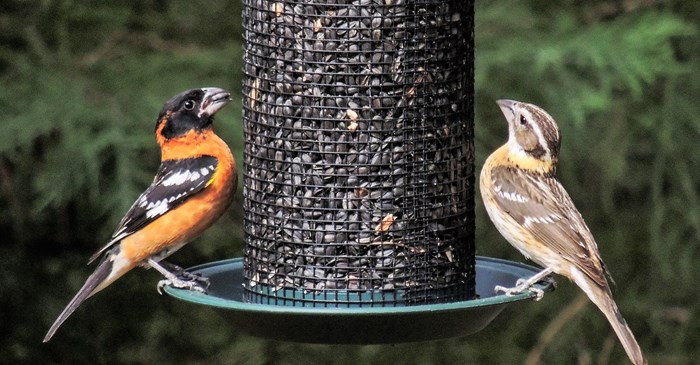Just as spring is in full swing, so is the nesting season of the Black-headed Grosbeak. Aim your gaze upward into the branches of mature trees and listen for their robin-like song and you just may catch a glimpse of these mated pairs at work.
What to watch for during nesting season
The Black-headed Grosbeak spends its winters in Mexico. In mid-to late-April, males are the first to arrive to their breeding grounds, which span from the Rocky Mountains to the Pacific Coast. Once the females show up, the courtship (and the singing) begins in earnest.
Once paired off, females will build loosely woven nests of twigs, pine needles and stems. These nests are so loosely constructed, their brown speckled eggs are visible from below. Males and females will share the incubating and feeding duties, and once their brood fledges, they’ll continue feeding them until they learn to fly.
How to tell the difference between a Black-headed Grosbeak and an Oriole
Males, with their black heads and orange breasts and bellies, are often mistaken for Baltimore Orioles. As similar as they appear, it’s actually pretty simple for even the most casual backyard birder to sort out.
For starters, where did you see the bird? If you’re in the vicinity of the Rocky Mountains and westward, chances are you’ve spotted a Grosbeak. Anywhere east of that is the land of Orioles. Then, check out the beak. As the name implies, the Black-headed Grosbeak’s is stout and large for its size.
Want to attract Black-headed Grosbeaks to your yard?
If you hope to attract Black-headed Grosbeaks to your feeder, keep in mind they are drawn to areas that feature plenty of mature trees along with shrubs in which they can take cover. Reach for the perfect blend and fill your feeder with Lyric's Cardinal Mix, which is loaded with the sunflower seeds they love to eat!
